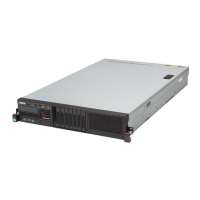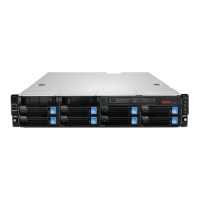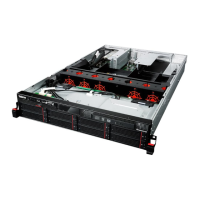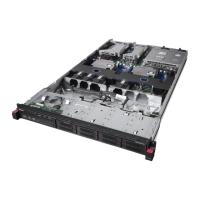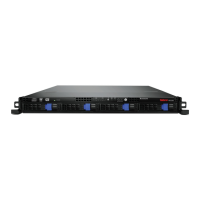LSI Corporation
- 412 -
12Gb/s MegaRAID SAS Software User Guide
March 2014
Glossary
Patrol read A process that checks the drives in a storage configuration for drive errors that could lead
to drive failure and lost data. The patrol read operation can find and sometimes fix any
potential problem with drives before host access. This enhances overall system
performance because error recovery during a normal I/O operation might not be
necessary.
Patrol read rate The user-defined rate at which patrol read operations are run on a computer system.
Predicted battery
capacity status (hold
24hr charge)
Indicates whether the battery capacity supports a 24-hour data retention time.
Product info A drive property indicating the vendor-assigned model number of the drive.
Product name A controller property indicating the manufacturing name of the controller.
R
RAID A group of multiple, independent drives that provide high performance by increasing the
number of drives used for saving and accessing data.
A RAID drive group improves input/output (I/O) performance and data availability. The
group of drives appears to the host system as a single storage unit or as multiple virtual
drives. Data throughput improves because several drives can be accessed
simultaneously. RAID configurations also improve data storage availability and fault
tolerance. Redundant RAID levels (RAID levels 1, 5, 6, 10, 50, and 60) provide data
protection.
RAID 0 Uses data striping on two or more drives to provide high data throughput, especially for
large files in an environment that requires no data redundancy.
RAID 00 Uses data striping on two or more drives in a spanned drive group to provide high data
throughput, especially for large files in an environment that requires no data redundancy.
RAID 1 Uses data mirroring on pairs of drives so that data written to one drive is simultaneously
written to the other drive. RAID 1 works well for small databases or other small
applications that require complete data redundancy.
RAID 5 Uses data striping and parity data across three or more drives (distributed parity) to
provide high data throughput and data redundancy, especially for applications that
require random access.
RAID 6 Uses data striping and parity data across three or more drives (distributed parity) to
provide high data throughput and data redundancy, especially for applications that
require random access. RAID 6 can survive the failure of two drives.
RAID 10 A combination of RAID 0 and RAID 1 that uses data striping across two mirrored drive
groups. It provides high data throughput and complete data redundancy.
RAID 50 A combination of RAID 0 and RAID 5 that uses data striping across two drive groups with
parity data. It provides high data throughput and complete data redundancy.
RAID 60 A combination of RAID 0 and RAID 6 that uses data striping across two drive groups with
parity data. It provides high data throughput and complete data redundancy. RAID 60
can survive the failure of two drives in each RAID set in the spanned drive group.
RAID level A virtual drive property indicating the RAID level of the virtual drive.
LSI SAS RAID controllers support RAID levels 0, 1, 5, 6, 10, 50, and 60.
RAID Migration A feature in RAID subsystems that allows changing a RAID level to another level without
powering down the system.
Raw capacity A drive property indicating the actual full capacity of the drive before any coercion mode
is applied to reduce the capacity.

